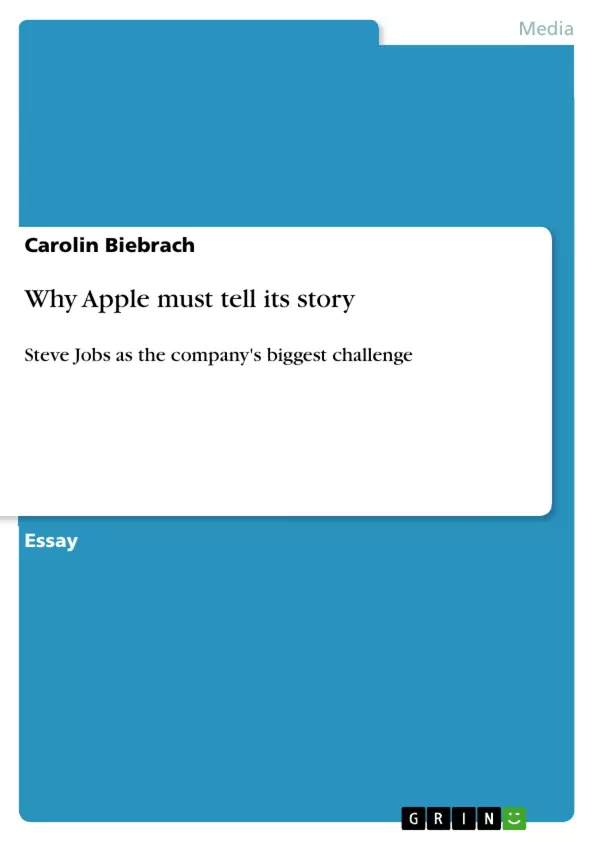The face of Apple is its C.E.O. Steve Jobs and rumors of his declining health threaten soaring stock prices and record-breaking revenues. This paper examines the problem of succession facing Apple. In order to maintain a viable and successful brand, Apple must look to differentiate Apple from Steve Jobs in the minds of consumers and shareholders. This paper also examines Apple’s relationship with the media and the marketing strategies employed to publicize Apple’s products. Apple should employ a public relations strategy which is more responsive to the press in all realms but most specifically in regard to their very public C.E.O.’s health.
Inhaltsverzeichnis (Table of Contents)
- Statement of Purpose
- Background
- Company Challenges
- Media
- Marketing
- Advertising
- Summary and Recommendations
Zielsetzung und Themenschwerpunkte (Objectives and Key Themes)
This paper examines the succession problem facing Apple, the company's relationship with the media, and the marketing strategies employed to publicize Apple's products. It aims to determine how Apple can maintain its brand viability and success amidst concerns about Steve Jobs' health and the potential impact of his absence on the company.
- The impact of Steve Jobs' health on Apple's brand image and financial stability
- Apple's media relations strategy and its effectiveness in managing rumors and speculation
- The role of marketing in maintaining Apple's image and driving consumer demand
- The need for a succession plan and the importance of a transparent communication strategy
- The challenges of differentiating Apple from Steve Jobs in the public's perception
Zusammenfassung der Kapitel (Chapter Summaries)
- Statement of Purpose: This section introduces the paper's focus on Apple's succession problem and the need for a strategic approach to manage the company's image in the face of concerns about Steve Jobs' health.
- Background: This section provides a brief history of Apple, highlighting the company's growth and successes under Steve Jobs' leadership and the challenges faced during his absence. It also mentions the rumors surrounding his health and their impact on the company.
- Company Challenges: This section examines the biggest challenge facing Apple: the media's portrayal of Steve Jobs' health and the uncertainty surrounding the company's future without him. It also discusses the potential consequences for Apple if Jobs retires.
- Media: This section explores Apple's relationship with the media, highlighting its strategy of secrecy and the challenges it faces in managing speculation about Steve Jobs' health. It examines the media's role in fueling rumors and the potential impact on Apple's public image.
- Marketing: This section analyzes Apple's marketing strategies, including its use of secrecy, press conferences, and "Stevenotes" to generate publicity and control the narrative surrounding its products. It highlights the importance of Steve Jobs' role in Apple's marketing efforts and the challenges of maintaining the company's image without him.
- Advertising: This section examines Apple's advertising campaigns, focusing on its iconic iPod and "I'm a Mac, I'm a PC" commercials. It highlights the company's reliance on mainstream media and its ability to generate buzz and consumer demand despite limited spending on online advertising.
Schlüsselwörter (Keywords)
This paper focuses on the impact of Steve Jobs' health on Apple's brand image and financial stability, the company's media relations strategy, marketing strategies, the need for a succession plan, and the challenges of differentiating Apple from Steve Jobs in the public's perception. The paper explores themes such as corporate communication, public relations, brand management, and leadership succession in the context of a highly successful and influential technology company.
- Quote paper
- Carolin Biebrach (Author), 2008, Why Apple must tell its story, Munich, GRIN Verlag, https://www.grin.com/document/129179



